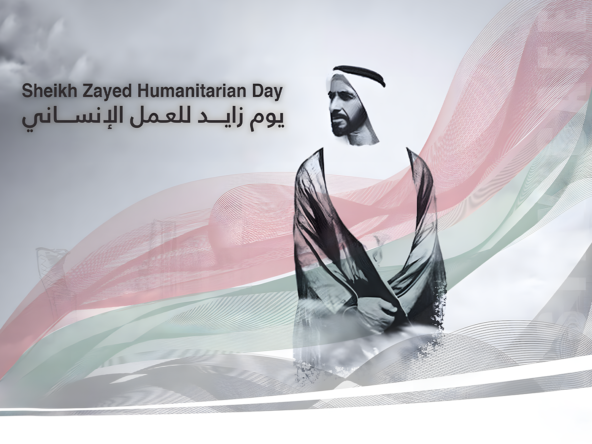As the holy month of Ramadan draws to a close, Muslims around the world turn their attention to a spiritual and celebratory milestone: Eid Al Fitr. However, the exact date of Eid remains uncertain until one vital event takes place—the Eid Al Fitr Moon Sighting. This annual astronomical and religious event is more than just a formality. It is deeply embedded in Islamic tradition and holds emotional, spiritual, and cultural significance across the Muslim world.
In this article, we’ll explore everything you need to know about the Eid Al Fitr Moon Sighting, including its religious importance, how it’s conducted, the science behind moon sighting, the role of various countries (especially the UAE), and why this centuries-old practice continues to unite Muslims globally.
What is Eid Al Fitr?
Eid Al Fitr, often referred to as the “Festival of Breaking the Fast,” is a joyous occasion that marks the end of Ramadan—the Islamic holy month of fasting. It is a day of celebration, gratitude, and community, where Muslims gather for special prayers, give charity (Zakat Al Fitr), wear new clothes, and enjoy festive meals with family and friends.
But before these celebrations can begin, one essential ritual must take place: the Eid Al Fitr Moon Sighting.
The Religious Significance of Moon Sighting in Islam
Islam follows a lunar calendar, and each month begins with the sighting of the new crescent moon (hilal). The Prophet Muhammad (peace be upon him) instructed his followers to observe the moon to determine the start and end of Islamic months. This tradition continues to this day.
The Eid Al Fitr Moon Sighting specifically determines whether Ramadan will conclude after 29 or 30 days. If the new moon is sighted on the 29th evening of Ramadan, Eid is declared for the next day. If not, Ramadan completes 30 days, and Eid follows the day after.
The Prophet Muhammad said:
“Fast when you see it (the new moon), and break your fast when you see it. If it is obscured from you, then complete the month of thirty days.”
— (Sahih al-Bukhari and Muslim)
This hadith emphasizes the visual confirmation of the moon, underlining the spiritual integrity and human element involved in the process.
How is the Eid Al Fitr Moon Sighting Conducted?
The Eid Al Fitr Moon Sighting is conducted across the Muslim world through a combination of traditional methods and modern technology.
Traditional Method:
Traditionally, trained observers and committees scan the horizon with the naked eye shortly after sunset on the 29th day of Ramadan. This is typically done from high-altitude locations or open landscapes where the western horizon is clearly visible. Once the crescent moon is observed, the sighting is confirmed by the country’s official moon sighting committee, often under the jurisdiction of the religious authority or government.
Modern Tools:
Today, countries also use astronomical calculations, high-powered telescopes, and computer modeling to predict the moon’s visibility. However, many Islamic scholars emphasize that visual sighting is still the primary method prescribed by the Prophet.
Some nations, like Saudi Arabia and the UAE, use both approaches—scientific data to assist, but official announcements are made only after physical sighting.
The Role of the UAE in Moon Sighting
In the United Arab Emirates, the Eid Al Fitr Moon Sighting is a well-coordinated and highly anticipated event. The UAE’s Moon Sighting Committee, formed by the government, plays a central role in determining the start and end of Ramadan and Eid.
On the 29th night of Ramadan, the committee gathers in a designated observatory or high-altitude area, often in coordination with the Islamic Affairs and Charitable Activities Department (IACAD). They await verified reports from across the Emirates before making an official announcement.
The result is broadcast across all major media channels—television, radio, and online platforms—and the public eagerly waits for the official word: “Tomorrow is Eid” or “Ramadan will continue for another day.”
A Global Unity Through the Moon
Although the moon is one celestial body shared by all, not all Muslims around the world observe Eid on the same day. That’s because Eid Al Fitr Moon Sighting depends on the local visibility of the crescent, and opinions differ on whether global or local sightings should dictate the start of Eid.
Local Sighting Approach:
Countries like India, Pakistan, and South Africa rely solely on their own local moon sighting, which may cause Eid to fall on a different day from neighboring nations.
Global Sighting Approach:
Some Islamic scholars advocate for a unified global sighting—if the moon is seen in any part of the Muslim world, all should observe Eid together. This method promotes unity, especially for Muslims living in multicultural societies like the UK, US, and Canada.
Despite the variations, the anticipation of Eid Al Fitr Moon Sighting brings Muslims together in spirit, waiting under the same sky for a sign of celebration.
Scientific Accuracy vs. Traditional Faith
Astronomers can predict with near-perfect accuracy whether the moon will be visible on a given night based on altitude, angle, and atmospheric conditions. Yet, many scholars insist that physical sighting is more than just tradition—it is obedience to the Sunnah.
While some countries have adopted pre-calculated calendars for logistical ease, others maintain the traditional approach to preserve the spiritual and communal experience of the moon sighting.
Interestingly, even when science indicates that the moon cannot be seen with the naked eye, some observers report sightings. This often sparks debate and scrutiny, but ultimately, each country’s official religious body has the final say.
Emotional and Social Aspects of Moon Sighting
The Eid Al Fitr Moon Sighting isn’t just a religious event—it’s an emotional one. Families gather around the television or on rooftops, waiting for the moon to appear or the official announcement to be made.
Children look to the sky with excitement, people share updates across social media, and the entire community holds its breath. When the crescent moon is finally seen, the atmosphere shifts—from the reflective calm of Ramadan to the joyful anticipation of Eid.
Bakers prepare sweets, tailors rush to finish outfits, and households begin final preparations for one of the most festive days in the Islamic calendar.
Common Phrases and Announcements
Once the moon is sighted, common phrases fill the air:
- “Eid Mubarak!” – Blessed Eid!
- “Eid Sa’id” – Happy Eid!
- “Tomorrow is Eid!” – A phrase often said with glowing smiles and hugs.
In Dubai and other cities in the UAE, fireworks, light shows, and Eid-themed events are planned, but it all starts with that first confirmed Eid Al Fitr Moon Sighting.
What to Expect for the Eid Al Fitr Moon Sighting 2025
In 2025, Ramadan is expected to begin around March 1st, which places the 29th night of Ramadan on or around March 29th, 2025. This will likely be the date when the UAE’s Moon Sighting Committee convenes.
If the crescent is visible that night, Eid Al Fitr will be celebrated on March 30th, 2025. If not, then Ramadan will extend to 30 days, and Eid will be on March 31st.
As always, the actual date will be confirmed based on the Eid Al Fitr Moon Sighting, and residents are advised to wait for the official announcement by the UAE government.
Eid Al Fitr Moon Sighting & Smart Luxury Living: Invest in Dubai with DAMAC
As the anticipation of Eid Al Fitr Moon Sighting fills the air, there’s no better time to reflect not just on spiritual growth but on securing your financial future through smart, lasting investments. Dubai’s real estate market stands as a global beacon of opportunity, offering more than just properties—it offers lifestyle and legacy. DAMAC Properties, known for their iconic developments, brings you a world of sophistication with exclusive communities like DAMAC Lagoons and DAMAC Hills. Whether you’re seeking a private villa or a waterfront apartment, DAMAC delivers luxury homes that offer not only elegance but enduring value. With rising living costs worldwide, now is the moment to make the smart move—embrace luxury and financial foresight. From contemporary architecture to resort-style amenities, every luxury property by DAMAC is a symbol of future-forward living. Eid Al Fitr Moon Sighting marks a celebration of new beginnings—let yours include investing in one of Dubai’s best luxury properties.e investing in one of Dubai’s best luxury properties.




